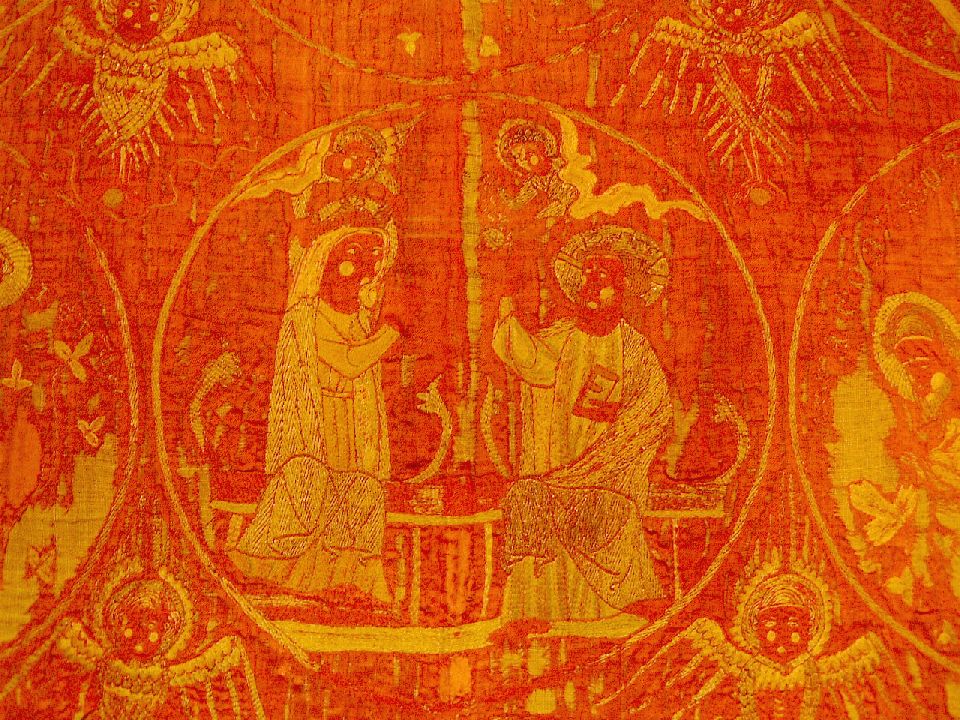Samite
 Samite was a luxurious and heavy silk fabric worn in the Middle Ages, of a twill-type weave, often including gold or silver thread. The word was derived from Old French ''samit'', from medieval Latin ''samitum, examitum'' deriving from the Byzantine Greek ἑξάμιτον ''hexamiton'' "six threads", usually interpreted as indicating the use of six yarns in the warp. Samite is still used in ecclesiastical robes, vestments, ornamental fabrics, and interior decoration.
Samite was a luxurious and heavy silk fabric worn in the Middle Ages, of a twill-type weave, often including gold or silver thread. The word was derived from Old French ''samit'', from medieval Latin ''samitum, examitum'' deriving from the Byzantine Greek ἑξάμιτον ''hexamiton'' "six threads", usually interpreted as indicating the use of six yarns in the warp. Samite is still used in ecclesiastical robes, vestments, ornamental fabrics, and interior decoration.Structurally, samite is a weft-faced compound twill, plain or figured (patterned), in which the main warp threads are hidden on both sides of the fabric by the floats of the ground and patterning wefts, with only the binding warps visible. By the later medieval period, the term ''samite'' was applied to any rich, heavy silk material which had a satin-like gloss, indeed "satin" began as a term for lustrous samite. Provided by Wikipedia
Showing 1 - 1
of 1
for search: Samite.
